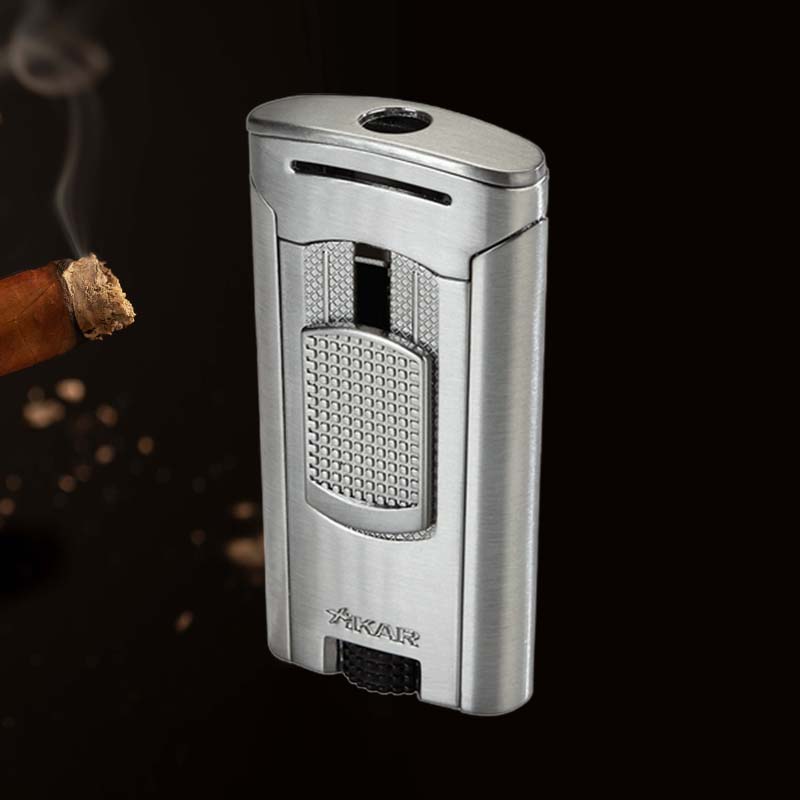When should thermometers be recalibrated
Today we talk about When should thermometers be recalibrated.
Picture this: I’m preparing for a family gathering, ensuring that my lasagna comes out piping hot and my roast chicken is succulent and juicy. Having accurate temperature readings is absolutely critical to this process. According to the USDA, over 48 million people get sick from foodborne illnesses each year, highlighting just how vital it is that I take thermometer calibration seriously. Understanding « when should thermometers be recalibrated » prevents cooking disasters and helps keep my loved ones safe.
Why is Thermometer Calibration Important?
Calibration serves as a cornerstone of effective food safety practices. I’ve learned that a mere one degree of difference can lead to improper cooking, making it essential to keep my equipment in check.
Impact on Food Safety
- Preventing Foodborne Illness: According to the CDC, 1 in 6 Americans experience food poisoning each year. An inaccurate thermometer may lead to undercooked meats, exposing me and my family to pathogens like Salmonella and E. coli.
- Ensuring Proper Cooking: Some meats, such as poultry, should reach an internal temperature of 165°F to be safe. If my thermometer isn’t calibrated, it might read lower, putting my family at risk.
- Enhancing Cooking Techniques: I’ve noticed that my culinary prowess improves significantly with precise readings; for example, baking often requires precision where a slight error could lead to burnt edges or a soggy center.
When Should You Calibrate a Food Thermometer?

Knowing the specific situations that require recalibration is essential for maintaining my thermometer’s accuracy. Calibration might feel like an extra task, but it’s fundamental to my cooking routine.
Signs that Calibration is Needed
- Physical Damage: If I accidentally drop my thermometer, I immediately plan to recalibrate. Damage often occurs without visible signs, and my accuracy may be compromised.
- Frequent Temperature Variations: If I notice that my thermometer reads 10°F too high or too low consistently, recalibration is necessary to ensure proper cooking, especially for meats where precision matters.
- Periodic Use: After storing my thermometer for months, I always recalibrate it before putting it to use again—dirt, accumulation, or wear can affect its readings.
How Do You Calibrate a Thermometer?

The calibration process isn’t complicated, but knowing the correct steps ensures my thermometer provides accurate readings every time.
Step-by-step Calibration Process
- For a Digital Thermometer: I prepare a glass filled with ice and water, wait for a few minutes, and insert the thermometer into the mixture. It should read 32°F. If it doesn’t, I adjust it to match. This method is reliable for ensuring my thermometer is spot on.
- For a Dial Thermometer: I bring water to a boil, insert the thermometer, and check it reads 212°F. This confirms its accuracy at a high temperature, particularly important for meats cooked at high heat.
How Often Should a Food Thermometer be Calibrated?

The frequency of calibration can vary widely depending on usage and specific conditions. Understanding when to recalibrate extends the life of my thermometer and improves my cooking.
Factors Influencing Calibration Frequency
- Usage Frequency: Since I use my thermometer weekly, I calibrate it every month. If I notice unusual results, I recalibrate immediately to ensure it’s working correctly.
- Temperature Extremes: Exposure to extreme heat or cold can necessitate recalibration sooner than my usual schedule. For example, I recalibrate my thermometer whenever it’s used in grilling or deep frying.
- Type of Thermometer: Some thermometers, like digital probes, might drift more easily than dial thermometers. I keep this in mind and revise my calibration schedule accordingly.
How to Test Your Thermometer’s Accuracy
Testing for accuracy is my safety net, ensuring my thermometer reads correctly before diving into cooking.
Simple Testing Methods
- Ice Water Test: For this test, I fill a bowl with ice and water, let it sit for about five minutes, then insert my thermometer. It should read 32°F. This straightforward method verifies that my thermometer is functioning well in a low-temperature environment.
- Boiling Water Test: I boil water on the stove, ensuring it’s at a full rolling boil, and then check that my thermometer registers 212°F. This checks its performance at high temperatures, ensuring safety in my cooking practices.
Adjusting Your Thermometer

When the readings are off, I need to take corrective action to maintain the temperature accuracy I depend on.
Techniques for Accurate Adjustment
- Using a Screw Calibration (for dial thermometers): I can easily unscrew the back, make adjustments, and check my settings with reliable boiling or freezing point methods. This process can bring the thermometer back into alignment quickly.
- Follow Manufacturer Instructions: Every thermometer model has unique settings; following the manual can guide me properly for adjustments specific to my device.
Recalibrating Your Thermometer Frequently
I often find myself in scenarios where recalibrating becomes necessary—it’s a crucial habit that leads to better cooking results.
Recommended Calibration Schedule
- Once a Month: This works well for my highly used thermometers, ensuring they remain accurate.
- Before Major Cooking Events: During holidays or family gatherings, I make it a rule to recalibrate to guarantee everything comes out perfectly.
- As Needed: If I suspect my thermometer is giving inaccurate readings, I don’t hesitate; immediate checking and recalibration are always better than the alternative.
Effective Calibration Methods

Understanding whether to use the boiling point or freezing point methods is key to effective calibration.
Boiling Point vs. Freezing Point Methods
- Boiling Point Method: This method is great for ensuring my thermometer’s reading is correct at high temperatures, which is crucial when cooking meats that need to reach a specific internal temperature.
- Freezing Point Method: This is ideal for confirming accuracy in low-temperature situations, especially for monitoring cooling processes, where precision is critical for food safety.
How to Identify If Your Thermometer Needs Calibration

Recognizing signs of inaccuracy in my thermometer is vital. Ignoring these can lead to unsafe meals or culinary mishaps.
Common Indicators of Inaccuracy
- Consistent Reading Errors: If my thermometer consistently shows a 5°F difference from known accurate tests, I recalibrate it to prevent my cooking from being compromised.
- Discrepancies with a Trusted Thermometer: If I notice a difference between two thermometers, recalibration ensures I can trust my readings for future cooking sessions.
Should I Calibrate a New Food Thermometer?

Starting off on the right foot with a new thermometer is essential—it sets the stage for future cooking successes.
Initial Calibration Considerations
- Manufacturer Guidelines: Before using my new thermometer, I always check for any specific calibration instructions that the manufacturer provides to ensure accurate readings from the onset.
- Test it Out: I conduct a quick ice water test before the initial use. This helps me gain confidence in the thermometer’s accuracy, establishing trust in its readings from day one.
Tips for Maintaining Thermometer Accuracy
Beyond calibration, I find that the ongoing care of thermometers is just as critical for keeping my cooking precise.
Best Practices for Thermometer Care
- Clean Regularly: After each use, I clean my thermometer to prevent cross-contamination and maintain its accuracy.
- Store Properly: I ensure my thermometer has a safe place in my kitchen drawer to prevent accidental damage, prolonging its life and keeping its readings reliable.
Understanding Different Types of Thermometers

Choosing the right thermometer can make a significant difference in my cooking experience. Each type has its advantages based on user needs.
Choosing the Right Thermometer for Your Needs
- Instant-Read Thermometers: Perfect for quick checks, I rely on these when I want fast and clear readings—ideal for burgers or steaks.
- Probe Thermometers: Great for slow-roasting sessions, these provide a continuous reading, ensuring meats cook to perfection.
- Infrared Thermometers: I appreciate these for gauging surface temperatures, particularly handy for frying or candy-making.
Documenting Calibration Procedures
I’ve found that keeping a record of calibration helps ensure nothing slips through the cracks, making food preparation smoother.
Importance of Keeping Calibration Records
- Tracking History: By logging every calibration, I can easily spot patterns indicating when recalibration becomes more frequent.
- Compliance with Standards: If I run a kitchen or food establishment, maintaining records proves useful during health inspections, demonstrating due diligence in food safety practices.
Conclusion

Summary of Key Points
In summary, being vigilant about « when should thermometers be recalibrated » not only ensures safety but elevates my culinary skills. Implementing regular calibration and maintenance routines can have a profound impact on the quality of my meals, safeguarding my family while also allowing me to take pride in my cooking. Food safety is not just a responsibility—it’s an essential ingredient in every dish I prepare.
FAQ

When should the thermometer be reset?
I reset my thermometer when I notice discrepancies of more than 2°F from accurate sources or after it has been dropped or exposed to extreme environments.
When should thermometers be calibrated in ServSafe?
In ServSafe practices, I calibrate thermometers at the start of each shift and whenever I suspect they’re inaccurate to ensure compliance with food safety standards.
When should thermometers be calibrated IHOP?
At IHOP, thermometers should be calibrated daily before the kitchen opens to maintain high food safety standards throughout service.
What happens when a thermometer is not calibrated?
If a thermometer isn’t calibrated, I risk cooking food at improper temperatures, leading to potential foodborne illnesses and compromising the safety of those consuming the meal.





